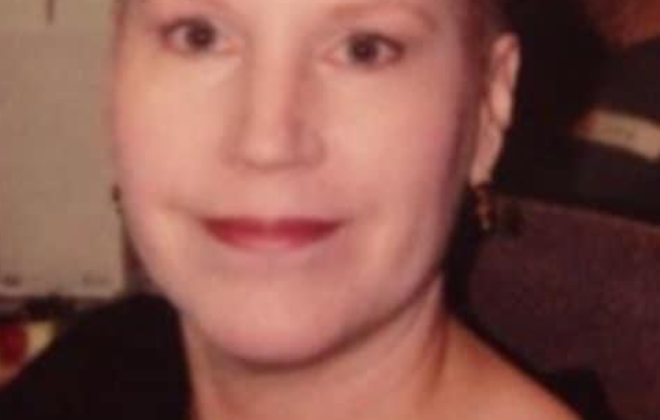Seeking Christ’s Face at Lent and Always
I stared at the words on the page.
How many times had I read them, and yet I’d never really noticed this one particular part—The wrapping that had been on his head was not lying with the linen cloths but was folded up in a separate place by itself (John 20:7 CSB).
Though it was the disciple Jesus loved who reached the tomb first, it was Peter who entered. And while scripture tells us John “saw the linen cloths lying there” (20:5), Peter was the one who noticed that the head covering of Jesus was folded up in a separate place.
Why? I wondered. Why would Jesus specifically fold the face cloth, then set it off separately from that which had covered His broken body?
My attention was perked concerning this passage.
Figuratively highlighted for me, it’s what I refer to as a “rhema moment”—when a portion of scripture I’ve read a dozen times—Strikes differently. Jumps off the page. Stands out in a fresh way.
In Hebrew, “rhema” meaning an utterance (from Strong’s).
In short, it describes how God’s Word, even passages one’s studied prior, can hold new meaning when she hears the Holy Spirit’s whisper. His utterance. And for the reader of scripture, it’s a gift because it causes her to seek.
Having been struck by this particular verse, I asked the Lord, What’s the message You’re speaking? Then I prayerfully reread the passage within its context, trying to place myself in the scene, picture what has taken place.

Jesus is raised from the dead.
The reality of this mighty miracle isn’t perhaps pondered enough, at least until closer to the Lenten season, and we’re not given glimpses behind the stone which sealed the tomb. But we are offered clues concerning what occurred.
With the help of the Holy Spirit one can imagine.
On the third day, having conquered sin, Jesus—His nail-pierced hands and feet, spear-struck side, and bloodied brow—rises. And not from slumber but from literal death.
Indeed, He’s defeated the grave.
Being man, perhaps Jesus wanted to stretch, rub His eyes but was bound too tightly to do so. Certainly, He managed a smile; after all, that which His humanness dreaded, apparent when He cried out to Abba several nights before, was behind Him (Luke 22:42). Because He’d chosen the will of His Father, glory lay ahead, just beyond the tomb’s stone.
Were there ministering angels with Him to assist with removing the burial cloths? Do you think the linens simply fell away? Or did Jesus rise, wiggle His hands free, then unwrap Himself, a little at a time? Was He able to inspect His once bruised and battered limbs, discovering that all of Him had been made new?
I wonder.
Free from the wrappings enshrouding His body, did He then remove the face cloth? But how could He have seen with His face covered? Was it the other way around? It makes sense that Jesus would first take off the head wrap, that which covered His eyes, but it’s Jesus we’re talking about, so was that necessary?
Either way, no matter which was discarded first, Jesus chose to fold the face cloth, then lay it down separately, with intentionality. Not merely a random act, or the Spirit’s utterances to John, that which guided his quill, wouldn’t have had him write it so specifically.
Certainly, this is a statement of some kind, something to ponder. It makes one ask—
What is it?
The Hebrew word for the question What is it?—something we read first in the Old Testament—is manna, that mysterious food which fell from Heaven to feed a rebellious, though chosen, people (Exodus 16:14). So, again—
What. Is. It?

Maybe Jesus made a statement to simply cause us to inquire because His intentionality in doing so beckons us, likewise, to be intentional in our search for an answer.
And the way to discover truth about our Savior, even concerning a folded head wrap, is when we…
Seek His face.
Ah. Perhaps we’re getting somewhere. Isn’t that what a relationship with Jesus is really all about—to earnestly seek His face here until, one day, we’ll see Him face to face, in Heaven?
Which takes us back to the tomb, to those early morning moments that made all the difference. Jesus’s burial wraps removed, the face cloth folded and laid aside separately, don’t you imagine that, even before the stone’s rolled away, light fills the space—the brilliance of the glorified Son?
And although He would do so with all humility, Jesus is about to reenter the world’s stage. Just as a star who’s hidden behind a curtain waits to be seen, our Savior, too, is ready. Once the stone’s removed, He steps forth.
It’s no mystery to Him. No, He’s aware of what His followers will find—John, Peter, and finally, others who’ll see for themselves—that heap of cloth. The folded face covering.
A message for them, a message for us—then and now, for all time.
Seek My face.
Still, it began with a Baby. The newborn, His body wrapped in cloth, likely only His face showing, was placed in a feeding trough where He was worshipped—first, by shepherds. Later, by wisemen. Three decades down the road, by disciples. By those who were delivered from demons. By those who were healed, their lives restored.
And today, He alone is worthy of our worship. The message is the same—
Seek My face.
One day, there will be no mysteries, no portions of scripture that raise questions, causing us to seek answers. But, for now, there’s beauty in seeking, when “rhema moments” happen, and we inquire again, asking—“What is it, Lord?”
The questions lead us to lean in and look. Sometimes we peer into a manger. Other times, we imagine what’s behind a stone.
The ultimate answer?

It’s coming for those who persist in their faith. It’s the reason Jesus came. It’s why He died and rose again. To make things right, to heal all our broken places. To redeem a rebellious, though chosen, people.
Let anyone who has ears to hear listen to what the Spirit [utters]… To the one who conquers, I will give some of the hidden manna… (Rev. 2:17a CSB).
Indeed, the mystery’s solved. The answer’s found in a folded head covering. Can you hear Him?
Seek My face.
(***Images are compliments of Pixabay***)
*This article appeared first at Living By Design. *
Related Posts
8 Comments
Comments are closed.
Search
Subscribe to Blog via Email
Categories
- At Home (173)
- God's Word (180)
- His World (198)
- Uncategorized (5)





Oh, the tenderness in “seek my face”! The love!
Thank you for this, Maureen. Beautiful.
Oh, thank you so much, dear friend. Thank you for being a Jesus-seeking friend in this journey! Seeking His face–where else would we ever desire to be but THERE! Love my Savior so!
What you write is always great, but this may very well be your best! I appreciate the depth of your message.
Thank you, Jay. Seeking my Savior–no where else I’d rather be. But it sure is reassuring knowing we have others seeking Him also on life’s journey… and then there’s Heaven! Bless you and yours!
Maureen, what a lovely, thoughtful reflection. When Mike was in seminary, he learned of a first century custom in which craftsmen would take a cloth and lay it next to their finished work, indicating that it was complete. We have often thought that perhaps Jesus, the carpenter, did the same. It was finished. It is finished. For us.
Oh wow! What a wonderful thought! I’ve also since heard that in Jewish tradition, a guest will fold the napkin and lay it at their place if they must leave but plan on returning. Perhaps Jesus was letting us know, “I am going away, but I will return.” <3 Love you friend!
A keen discovery, observation, and realization! Thank you for sharing, Maureen. I pray we will all diligently seek His Face!
Thank you, Sarah. Nowhere else we should ever be but seeking His face! Seeking with you, dear friend!